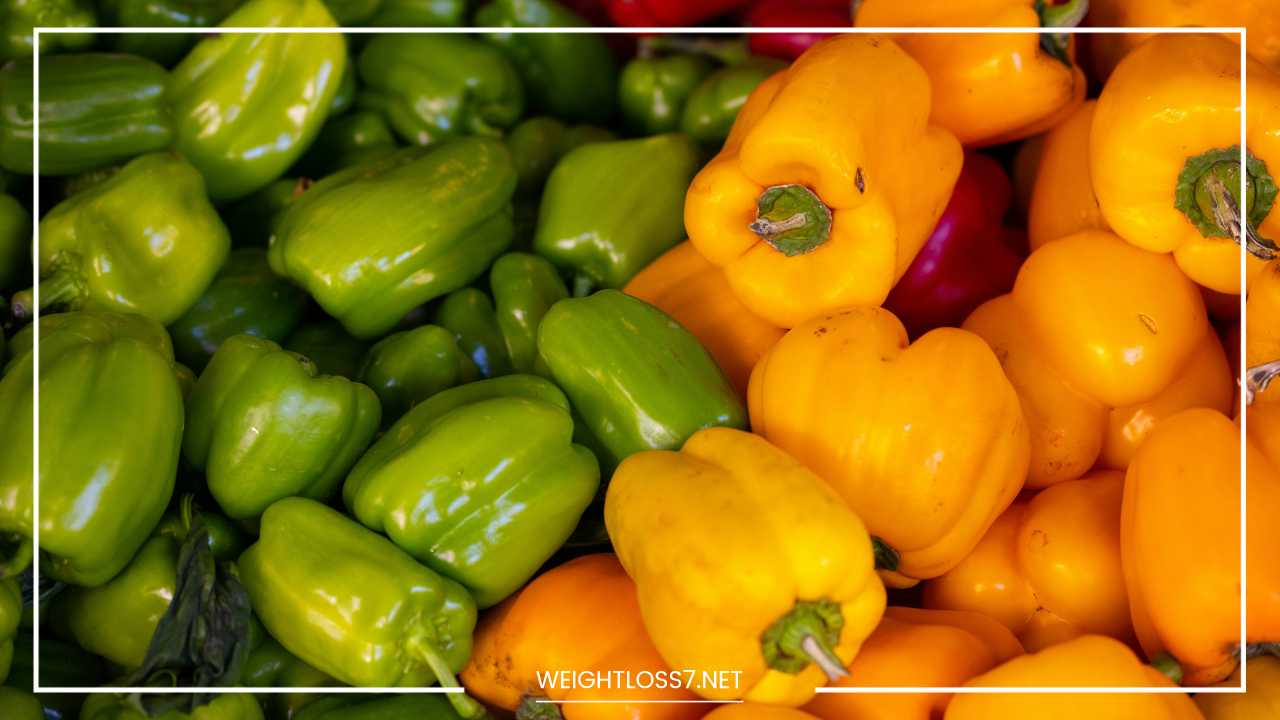Low Calorie Diet Plan: Lose Weight & Feel Great

Low Calorie Diet Plan
Shedding Pounds Safely: A Comprehensive Guide to Low-Calorie Diet Plans
Embarking on a weight loss journey is an exciting yet daunting prospect. With a plethora of diet plans vying for your attention, choosing the right approach can feel overwhelming.
One strategy that consistently garners interest is the low-calorie diet plan. But before you dive headfirst into a world of restricted calories, let’s delve deeper.
This comprehensive guide will explore the core principles of low-calorie diets, equip you with the tools to create a sustainable plan, and provide delicious recipes to tantalize your taste buds while keeping you on track.
Understanding the Science Behind Low-Calorie Diets
At its core, a low-calorie diet creates a calorie deficit. This means you consume fewer calories than your body burns, forcing it to tap into stored fat for energy.
The extent of this deficit can range from 500-1000 calories per day. However, it’s crucial to consult a doctor or registered dietitian to determine a safe and effective target for your individual needs.
Beyond the Numbers: Essential Considerations for Success
While the concept of calorie deficit seems straightforward, a successful low-calorie journey requires a holistic approach. Here are key factors to keep in mind:
- Individualized Needs: A one-size-fits-all approach doesn’t work. A 25-year-old athlete will have vastly different calorie requirements compared to a 50-year-old with a desk job. A doctor or dietitian can personalize a plan that factors in your activity level, age, health conditions, and weight loss goals.
- Nutrient Adequacy: Even on a calorie-restricted diet, your body still demands essential vitamins and minerals. Don’t fall into the trap of empty calories. Focus on whole, unprocessed foods like fruits, vegetables, whole grains, and lean protein sources. These foods are nutrient-dense, keeping you feeling fuller for longer and preventing unhealthy snacking.
- Sustainability is Key: Crash diets and extreme calorie restrictions are notorious for yo-yo weight loss. Aim for a gradual, sustainable calorie reduction you can maintain for the long term. Small, consistent changes are more effective than drastic, short-lived ones.
Crafting Your Personalized Low-Calorie Plan: A Step-by-Step Guide
Now that you understand the fundamentals, let’s get into the practicalities of building your personalized plan:
- Calculate Your Baseline: Numerous online calculators estimate your Basal Metabolic Rate (BMR). This is the number of calories your body burns at rest, serving as a starting point for determining your calorie target. Remember, BMR calculators are estimates, and individual variations exist.
- Factor in Activity Level: Don’t forget about the calories you burn through daily activities and exercise! Use a fitness tracker or consult a calorie expenditure calculator to estimate the additional calories burned based on your activity level.
- Set Realistic Goals: Don’t chase unrealistic expectations of overnight transformations. Aim for a healthy weight loss rate of 1-2 pounds per week. This is a sustainable and achievable goal that reduces the risk of plateaus and discouragement.
- Focus on Food Quality, Not Just Quantity: Prioritize nutrient-dense, low-calorie foods. Pack your plate with fruits, vegetables, whole grains, and lean proteins. These foods are not only good for you, but they also keep you feeling satiated, preventing unhealthy snacking.
- Portion Control is Your Ally: Even healthy foods can pack a calorie punch. Use measuring cups and spoons, or invest in smaller plates to manage portion sizes. This will help you stay within your calorie target without feeling deprived.
- Hydration is Essential: Water is not only crucial for overall health, but it can also curb cravings. Aim for at least eight glasses of water daily. Additionally, unsweetened tea and black coffee can be hydrating options.
Sample Low-Calorie Meal Plans for Different Needs
Here are two sample meal plans, each providing around 1500 calories, catering to different dietary preferences:
Sample Low-Calorie Meal Plan (1500 Calories – Vegetarian):
- Breakfast (350 calories): Greek yogurt with berries and a sprinkle of chopped nuts, or whole-wheat pancakes with spinach and ricotta cheese filling.
- Lunch (400 calories): Lentil soup with a side salad and a whole-wheat roll, or a veggie wrap with hummus, roasted vegetables, and whole-wheat tortilla.
- Snack (200 calories): Carrot sticks with hummus, or a handful of mixed nuts and dried cranberries.
- Dinner (550 calories): Quinoa stuffed bell peppers with black beans and corn, or vegetarian chili with a dollop of low-fat Greek yogurt and a side of brown rice.
Sample Low-Calorie Meal Plan (1500 Calories – Pescatarian):
- Breakfast (350 calories): Scrambled eggs with spinach and whole-wheat toast, or smoked salmon with avocado slices and a whole-wheat bagel.
- Lunch (400 calories): Tuna salad sandwich on whole-wheat bread with lettuce and tomato, or a bowl of mixed greens with grilled shrimp, quinoa, and a light vinaigrette dressing.
- Snack (200 calories): Edamame pods with a sprinkle of sea salt, or a cup of cottage cheese with chopped cucumber and dill.
- Dinner (550 calories): Baked cod with roasted asparagus and lemon wedges, or salmon with a side of brown rice and steamed broccoli.
Beyond the Sample Plans: Building Your Recipe Repertoire
These sample plans provide a starting point, but variety is key to keeping your taste buds happy and your motivation strong. Here are some tips for building your low-calorie recipe repertoire:
- Explore Low-Calorie Cooking Techniques: Embrace grilling, baking, steaming, and poaching as healthy cooking methods that preserve nutrients and minimize added fats.
- Spice Up Your Life: Don’t be afraid to experiment with herbs and spices! They add depth of flavor without adding calories. Explore options like chili powder, cumin, turmeric, paprika, and fresh herbs like cilantro, basil, and parsley.
- Embrace Low-Calorie Swaps: There are many clever substitutions you can make to reduce calorie intake without sacrificing flavor. For example, use unsweetened applesauce instead of oil in baking, or swap cauliflower rice for regular rice to cut down on carbs.
Delicious Low-Calorie Recipes to Fuel Your Journey
Now, let’s get cooking! Here are a few recipe ideas to add flavor to your low-calorie journey:
Spicy Black Bean Burgers (vegan, 400 calories per burger):
Combine mashed black beans, chopped onions, bell peppers, chili powder, cumin, and a touch of olive oil. Form into patties and grill or bake. Serve on whole-wheat buns with your favorite toppings like lettuce, tomato, salsa, and a dollop of low-fat Greek yogurt for a creamy touch.
Easy Weeknight Salmon with Lemon and Dill (450 calories per serving):
Season salmon fillets with salt, pepper, lemon zest, and fresh dill. Bake in the oven for about 15 minutes or until cooked through. Serve with roasted asparagus and quinoa for a complete and satisfying meal.
Creamy Tomato and Basil Pasta (vegetarian, 400 calories per serving):
Sauté chopped tomatoes, garlic, and herbs with a splash of olive oil. Add a can of diced tomatoes and simmer for 15 minutes. Toss cooked whole-wheat pasta with the sauce and top with chopped fresh basil for a burst of flavor.
Hearty Lentil Soup (vegan, 350 calories per serving):
This protein-packed soup is a budget-friendly and satisfying option. Sauté onions, carrots, and celery in a pot. Add lentils, vegetable broth, diced tomatoes, and your favorite herbs and spices. Simmer until the lentils are tender. Enjoy hot with a slice of whole-grain bread.
Power Up Your Mornings with Chia Seed Pudding (vegan, 250 calories per serving):
Combine chia seeds with almond milk, a touch of maple syrup, and a teaspoon of vanilla extract. Let it sit overnight in the refrigerator for a pudding-like consistency. Top with fresh berries and chopped nuts for added texture and flavor.
Remember, these are just a few examples to get you started. There’s a world of delicious low-calorie recipes waiting to be explored!
Lifestyle Tweaks to Enhance Your Low-Calorie Journey
A successful low-calorie diet plan extends beyond just food. Here are some lifestyle changes that can significantly improve your results:
- Prioritize Quality Sleep: Aim for 7-8 hours of sleep each night. When sleep-deprived, your body produces more ghrelin (the hunger hormone) and less leptin (the satiety hormone), making you crave more calories.
- Stay Active: Exercise is a crucial component of weight loss and overall health. Aim for at least 150 minutes of moderate-intensity exercise per week. This could be brisk walking, swimming, cycling, or dancing.
- Stress Management: Chronic stress can lead to unhealthy food choices and weight gain. Practice stress-relieving techniques like yoga, meditation, or deep breathing exercises.
Beyond Weight Loss: The Long-Term Benefits of a Healthy Lifestyle
While weight loss is often the initial motivator for adopting a low-calorie diet plan, the benefits extend far beyond the numbers on the scale. Here’s how a focus on healthy eating habits can positively impact your life:
- Improved Overall Health: A diet rich in fruits, vegetables, whole grains, and lean proteins provides your body with the essential nutrients it needs to function optimally. This can lead to increased energy levels, a stronger immune system, and a reduced risk of chronic diseases like heart disease, type 2 diabetes, and certain cancers.
- Enhanced Mood and Well-Being: Eating a balanced diet can positively impact your mood and cognitive function. Studies have shown a link between healthy eating habits and reduced symptoms of depression and anxiety.
- Boosted Confidence: As you reach your weight loss goals and experience the positive changes in your health and well-being, your confidence is bound to soar. You’ll feel more comfortable in your own skin and have the energy to pursue activities you may have previously avoided.
- Sustainable Lifestyle Habits: By adopting a gradual and sustainable approach to weight loss, you’ll develop healthy habits you can maintain for life. This is key to preventing weight regain and ensuring long-term health.
Navigating Challenges and Avoiding Pitfalls
Even with the best intentions, challenges can arise on your low-calorie journey. Here are some tips to navigate them successfully:
- Planning is Key: Plan your meals and snacks in advance to avoid unhealthy choices when hunger strikes. Utilize grocery delivery services or dedicate time each week to meal prepping to streamline the process.
- Deal with Cravings: Cravings are a normal part of the weight loss process. Instead of reaching for sugary snacks, opt for low-calorie alternatives like fruits, vegetables, or a small handful of nuts. Drinking a glass of water can also help curb cravings.
- Don’t Deprive Yourself: Allow yourself occasional treats in moderation. Deprivation can lead to binge eating and derail your progress. The key is to find a healthy balance and enjoy all foods in moderation.
- Celebrate Non-Scale Victories: Focus not just on the number on the scale but also on the positive changes you’re experiencing. Celebrate increased energy levels, improved sleep, or a newfound love of exercise.
- Seek Support: Don’t be afraid to ask for help! Surround yourself with supportive friends and family who understand your goals. Consider joining a weight loss support group or working with a registered dietitian for personalized guidance.
Final Word: A Sustainable Path to a Healthier You
A low-calorie diet plan, when approached thoughtfully and combined with a healthy lifestyle, can be a powerful tool for achieving your weight loss goals. Remember, the focus should be on creating sustainable habits that nourish your body and mind, not just quick fixes.
With dedication, planning, and a sprinkle of self-compassion, you can embark on a transformative journey towards a healthier and happier you.

















